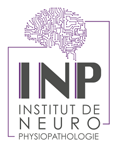Practical Review on Preclinical Human 3D Glioblastoma Models: Advances and Challenges for Clinical Translation
Résumé
Fifteen years after the establishment of the Stupp protocol as the standard of care to treat glioblastomas, no major clinical advances have been achieved and increasing patient's overall survival remains a challenge. Nevertheless, crucial molecular and cellular findings revealed the intra-tumoral and inter-tumoral complexities of these incurable brain tumors, and the essential role played by cells of the microenvironment in the lack of treatment efficacy. Taking this knowledge into account, fulfilling gaps between preclinical models and clinical samples is necessary to improve the successful rate of clinical trials. Since the beginning of the characterization of brain tumors initiated by Bailey and Cushing in the 1920s, several glioblastoma models have been developed and improved. In this review, we focused on the most widely used 3D human glioblastoma models, including spheroids, tumorospheres, organotypic slices, explants, tumoroids and glioblastoma-derived from cerebral organoids. We discuss their history, development and especially their usefulness.
Fichier principal
 Souberan and Tchoghandjian, Cancers, review 2020.pdf (2.49 Mo)
Télécharger le fichier
Souberan and Tchoghandjian, Cancers, review 2020.pdf (2.49 Mo)
Télécharger le fichier
Origine : Fichiers éditeurs autorisés sur une archive ouverte
